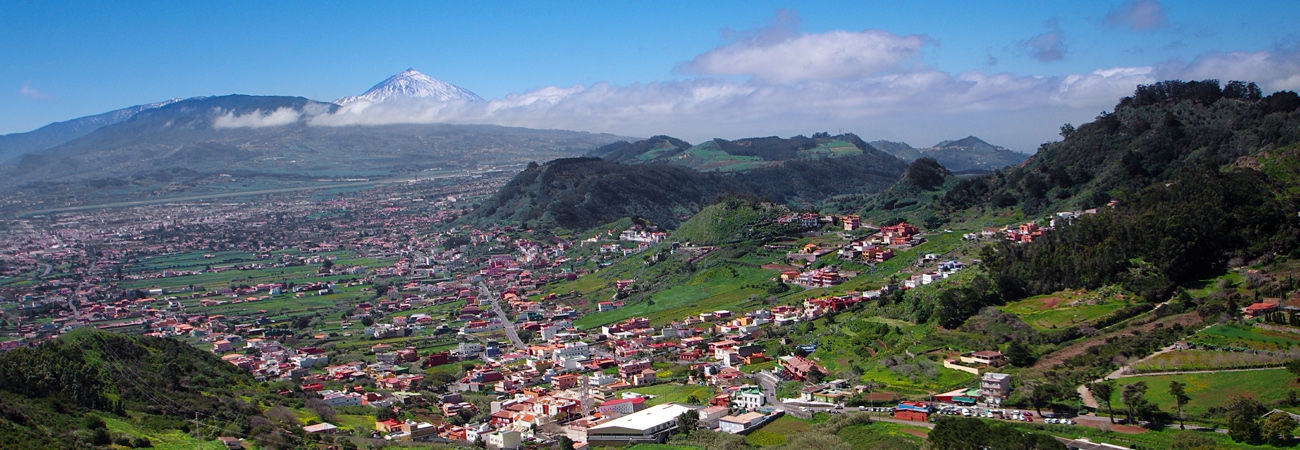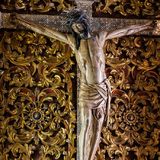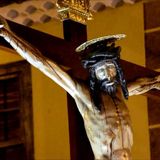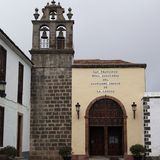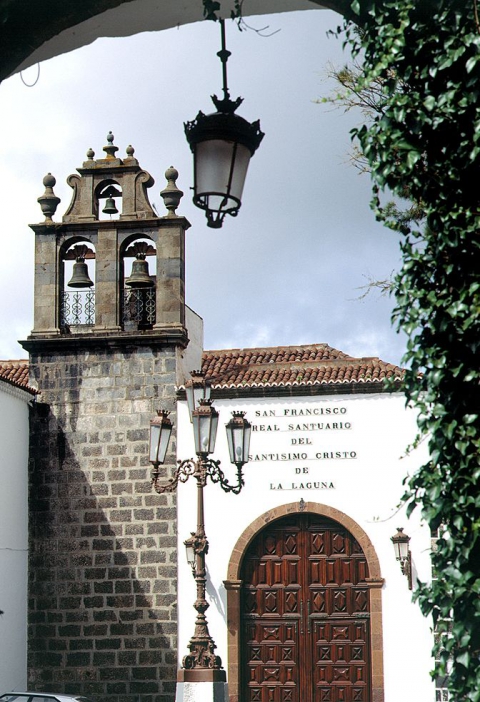Sanctuary del Cristo (La Laguna)
The "Real Santuario del Santísimo Cristo de La Laguna" was listed as a Cultural Monument in 2003 by the Canary Island Government (B.O.C. – Canary Island Government Gazette - nº 115 of the 18th of June).
Origin of the figure
There are many theories on the origin of the figure of Christ. It is assumed to be from Seville, sent to the island in 1520 as a gift for Governor Alonso Fernandez de Lugo from the Duke of Medina Sidonia.
Professor de la Banda y Vargas claimed it was the work of Jorge Fernandez, a Flemish religious figure artist who lived in Seville.
The Marquis of Lozoya, on the other hand, considered that it was a 15th century figure from Castile, while Professor Martin Gonzalez highlighted the fact that its sculpture showed the influence of figures carved in ivory.
It was Professor Joaquin Yarza who assumed that its origins were northern European, although he did not deny its Seville origins. The latest studies conducted by Professor Francisco Galante Gomez confirm that the figure came from the flourishing workshops of Antwerp, thus making it of Flemish-Brabanzon origin, and it was sculpted by Louis Van Der Vule around 1514.
Professor Francisco Galante Gómez, professor of History of Art at the University of La Laguna, used X-rays and ultra-violet to determine that Van Der Vule was the sculptor of the figure of El Cristo de La Laguna, thus putting an end to the controversy over its origin. Galante embarked on his work after finding some inscriptions located in one of the folds of the cloth that helped him to identify the sculptor.
Arrival on the island
It is claimed that the Santisimo Cristo went to Venice before coming to Tenerife, as the city was a major trading and economic centre at the time. From there, it was taken to Barcelona and from Barcelona to Cadiz, where it was given temporary accommodation in the church of La Vera Cruz in Sanlucar de Barrameda, patronised by the Dukes of Medina Sidonia. Although the figure has an undoubted artistic value, this is not as great as its archaeological value and is far below its sentimental value, as this is one of the most popular figures of the city, attracting more pilgrims and faithful than any other.
The figure has been honoured with a popular fiesta since the early 17th century, paid for by the Cabildo, on the 14th of September. It is also taken out of the church and carried in procession on Good Friday, placed on a tooled silver base that was donated by Captain Lazaro Rivero in 1654. The cross, covered with roughly worked silver, was a gift from Francisco Bautista Pereira de Lugo, Lord of the islands of La Gomera and El Hierrro, in 1630. The former cross that was replaced by this one is kept in the choir loft under the convent of the Clarissa nuns.
Real Santuario del Cristo
The church has a single, tall, narrow nave, measuring some 46 m long by 7 m wide. The entrance is via a door under the upper choir loft. The altar has a tooled silver frontispiece showing the family coat of arms of the Marquises of Villanueva del Prado. The back wall is covered by a large silver shrine, with a central niche, in which the cross of the Santisimo Cristo rests on the tooled wooden and gold base.
There is a small old, multi-coloured figure of San Miguel de las Victorias on top as a finishing touch. There is also a figure of La Dolorosa, made by Canary Island sculptor Rodríguez de la Oliva, and another one, of San Francisco de Asis, along with some fine gold and silver work, most of which comes from the finest workshops in La Laguna.
The church is currently classified as a "Real Santuario", or Royal Sanctuary, and is highly popular with church goers. It was returned to the Franciscan community of the annex to the Convent of San Miguel de las Victorias.







